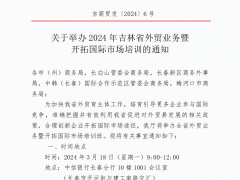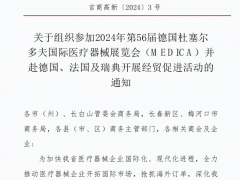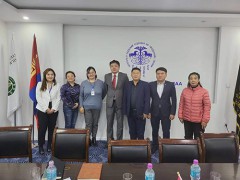The labor market supply is decreasing, the demographic dividend is decreasing year by year, and some high-risk industries are facing labor shortages. According to the 2016 Blue Book of Society released by the Chinese Academy of Social Sciences in December 2015, labor supply decreased in every quarter of 2015, which is the fourth consecutive year of decline after the labor market in 2012. It is estimated that China will have a serious shortage of labor force after 2030. At the same time, the problem of aging population is becoming increasingly prominent, and the advantage of demographic dividend is coming to an end. Therefore, affected by the nationwide labor shortage, the selectivity of labor to work industries has been improved, and high-risk industries may face difficulties in recruiting workers. In the construction industry, for example, 87.6 percent of construction sites in Jiangsu Province had a labor shortage in 2014. In this context, the use of robot employees can precisely fill this gap.
"Machine substitutions" perform high-risk jobs while helping companies reduce costs. The 13th Five-Year Plan points out that enterprises should strengthen the prevention and control of occupational hazards, and proposes to expand the coverage of industrial injury insurance to ensure that all employees enjoy industrial injury insurance and subsidies. In addition, the 2015 edition of the Classification Catalogue of Occupational Disease Hazard Factors published by four ministries and commissions of the state increased the original 133 hazard factors to 454, and enterprises faced with increasingly strict occupational disease prevention norms should invest more costs to implement them to ensure the safety of employees.
"Machine replacement", on the one hand, can not only complete the work with quality and quantity, but also effectively avoid the potential dangers that may bring bad results; On the other hand, the application of robot employees can improve production efficiency, reduce production costs, improve product technology content, and expand the competitive strength of enterprises in the development of enterprises.
The shortage of skilled workers slows the application of industrial robots in high-risk industries. It is predicted that the installed capacity of industrial robots will reach 1 million units in 2020, and a robot usually needs 3 to 5 technical talents for integrated application and related operation and maintenance, and the national industrial robot related talent gap has reached millions. High-risk industries, due to the complex operating environment and unpredictable emergencies, have higher requirements for the operation of robots, which not only requires engineers or technicians to efficiently control the central control of robots, but also to understand the relevant knowledge of the industry. At present, the high salary of such scarce talents has increased the application cost of robots in high-risk industries, making many enterprises prohibitive about machine replacement.
The core technology of robot manufacturing is mastered by foreign enterprises, which hinders cost reduction, making small and medium-sized enterprises in high-risk industries unable to invest. The development of China's robot industry is later than developed countries such as Europe, the United States and Japan, so the core technology and layer architecture design of robots are still controlled by these countries. At present, the basic technology has been able to meet the needs of our market, but only to meet the mechanical services, and in the overall cost structure, the proportion of the controller, numerical control system, reducer and servo motor need to rely on imports, only one reducer accounted for about 35% of the total cost. The lack of key components has led to significant restrictions on the expansion of the industrial chain for domestic enterprises, which cannot avoid high import costs, and can only assemble modules that are close to finished products. Therefore, for most small and medium-sized enterprises in high-risk industries, even if the machine replacement can save costs in the long run, but the purchase of robots also means the need to add supporting equipment and the introduction of relevant technical personnel, their capital chain can not be borne in the short term.
High-risk industries lack administrative means, and it is mandatory that dangerous jobs must be replaced by machines. Germany, where the robot industry developed earlier, introduced a policy of "improving labor conditions plan" as early as the 1970s, and the state used administrative means to force some dangerous, toxic and harmful jobs to be replaced by robots. In China, the State Administration of Work Safety vigorously promoted the automation level of key high-risk industries in 2015, but no clear administrative measures were introduced to force specific positions in high-risk industries to achieve machine replacement. Small and medium-sized enterprises in high-risk industries, even under the advocacy of national policies, due to the lack of corresponding funding and talent support, it is difficult to promote industrial robots in dangerous jobs in the short term. First, it is to encourage the training of specialized talents for robot applications in high-risk industries and improve the operational capabilities of employees in high-risk industries. High-risk industries require that robot application personnel must have industry knowledge, so the government can set up special funds to encourage and support enterprises to select on-the-job employees for relevant operational training. Under the premise of their own practical experience, practitioners in high-risk industries such as mining can master the work of robot operation and maintenance through training, which can help enterprises effectively respond to various emergencies in the application of robot dangerous operations.
The second is to increase research and development efforts to achieve the localization of key robot parts. On the one hand, China should control the low-level construction of the robot industry to achieve the production capacity target, and focus on the research and development of domestic technologies and patents. Support universities to focus on the development of machinery, artificial intelligence, sensors, control, network and communication and other disciplines to train professional personnel; On the other hand, the development of industry application solutions, from the downstream software design breakthrough, to provide customized solutions for high-risk industries. The third is to encourage smes in high-risk industries to integrate resources and build alliances for collaborative innovation. High-risk industries in the construction industry, chemical industry, metallurgical minerals and other industries of small and medium-sized enterprises, these enterprises with their own strength to invest in robot technology is easy to cause the capital chain break. Policies should be introduced to encourage smes of the same type in high-risk industries to build alliance innovation models and have more capital to develop advanced robotics technologies through resource sharing.
Fourth, through administrative regulations to restrict enterprises to achieve machine replacement in dangerous operations. On the one hand, the Chinese government should learn from the German precedent and formulate administrative regulations to force some dangerous positions to achieve machine replacement. On the other hand, local governments have accelerated the depreciation rate of corporate fixed assets by introducing preferential fiscal and tax policies, and increased the disposable funds for enterprises to invest in robot technology. At the same time, it provides talent support and forms an expert group to guide the technical application of enterprises.
 Customer service hotline:
Customer service hotline:



